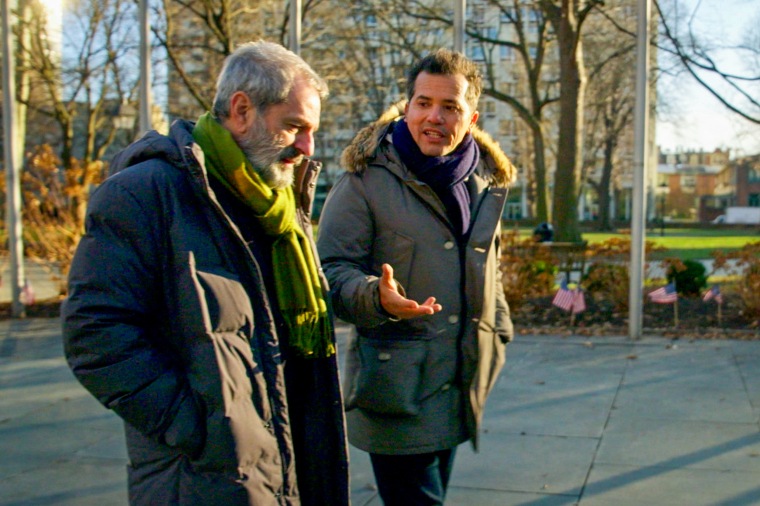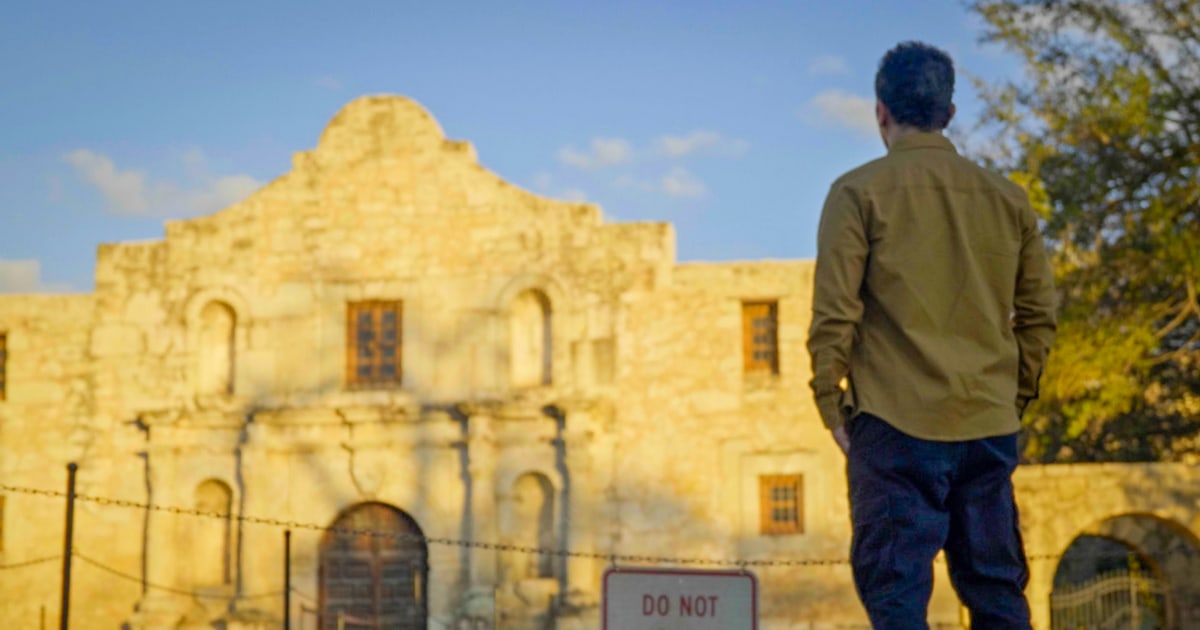For John Leguizamo, his 2017 one-man Broadway play “Latin History for Morons” was his introduction into addressing and tackling the “erasure of our Latin history.”
Now in “American Historia: The Untold Story of Latinos,” Leguizamo sets the record straight as he delves into the sweep of U.S. Latino and Latin American history from the powerful and technologically advanced Indigenous empires to the Civil Rights Movement in a three-part series that premieres Friday on PBS.
“We’ve been crossed out, erased, deleted. And this is our way of undoing that,” Leguizamo said in a video interview with series co-creator Ben DeJesus.
The actor referenced a 2023 study from Johns Hopkins University, which said that “87% of key topics in Latino history were either not covered” in the books that were evaluated or “mentioned in five or fewer sentences.”
‘You can’t just use your Googles’
“American Historia” follows Leguizamo as he visits historic sites that are relevant to Latino history and speaks with different experts, including Latina civil rights icon and United Farm Workers co-founder Dolores Huerta.
The first episode of the series focuses on the rise and fall of Indigenous empires in the Americas — the Olmec, Inca, Maya and Aztec, which predated the arrival of the Spaniards and other European colonizers.
He then moves on in the second episode to feature key Latino figures in U.S. history during the 17th, 18th and 19th centuries. The third episode covers civil rights movements that championed Latino activism and solidarity in the 20th century.
Co-creator DeJesus says the seed for the series was planted during the filming of a documentary about “Latin History for Morons.”
“Pretty early on in the process, John and I had a conversation about what if we took you [Leguizamo] to the places where this history actually happened and we did it as an in-depth exposé,” he said. “That’s why we’re here now.”

Part of the challenge of telling Latino history, Leguizamo said, is that you have to find it.
“It was years and years of studying Latin history,” the actor reflected. “You can’t just use your Googles. You have to go and read tons of books … then you get a compendium of all this information and that’s what this series is. It’s sort of the cherry-picking of the most important facts that I was able to find.”
Leguizamo said that he was inspired to tell this three-part history by reading the books of the late Uruguayan journalist, novelist and activist Eduardo Galeano.
Specifically, Leguizamo pointed to Galeano’s “Memory of Fire” trilogy, which divides the history of the Americas into three parts: from pre-Colombian tribes to European colonies up to the 17th century, then followed by independence and nation-building movements in the 18th and 19th centuries, and concluding with 20th-century social and political events.
When asked about the legacy of these histories, Leguizamo explained that it boils down to recognizing that Latinos and their histories stand shoulder to shoulder with other groups.
“We came from kings and powerful empires that were equal to anything in Europe or Asia,” the actor said. “There were 30 million Aztecs, 30 million Incas — we had bigger empires on this side of the world than the other side of the world at the same time.”
The actor listed that many accomplishments of those early kings and empires in the Americas — from the sophisticated construction of aqueducts and toilets well before the arrival of Columbus to one of the most precise trackings of the planet Venus to the development of the Mayan concept of zero — these were taking place at the same time as other big cultural developments in the Middle East and Asia.
Ultimately, both co-creators noted, something even deadlier than guns and steel would lead to the demise of these Latin American kingdoms and empires.
“The one thing we didn’t have, unfortunately, is immunity to the diseases that came from Europe,” DeJesus said, which he considered much more devastating than the Europeans’ military skills and weapons.
Leguizamo referred to these pandemics as a “death knell” that “took us down all at once.”
The series will shine a spotlight on key Latino histories that many viewers might not know.
One of these hidden stories connects Spanish-speaking allies with George Washington.
“Do you know what you need to fight a war? Dinero, plata, chavo, that’s right, and lots of it,” Leguizamo explains in the second episode. “So when Washington was running low on cash to pay his army, he turned to his Latino amigos for help.”
These friends delivered the money that Washington needed to keep his Continental Army fighting. And off-camera, DeJesus called attention to a group of women who played a significant part.
“Cuban ladies actually gathered all their jewelry to be able to help George Washington feed his troops at a very crucial time of the American Revolution,” he said.
The 1945 book “Admiral De Grasse and American Independence,” by Charles Lee Lewis, describes how 1.2 million livres (the currency of the Kingdom of France during the American Revolution) was raised in Havana to support Washington’s troops, with “ladies even offering their diamonds.”
Knowing these facts, Leguizamo explained, is a form of activism.
“When you have these historical facts, it changes you,” the actor said. “It empowers you, it gives you a sense that you matter, that you’re important, and the kids especially feel that.”
For DeJesus, knowing Latino history also gives you a sense of belonging.
“When you start thinking about, when did Latinos arrive here? The answer is we’ve always been here,” DeJesus said.

Leave a Reply